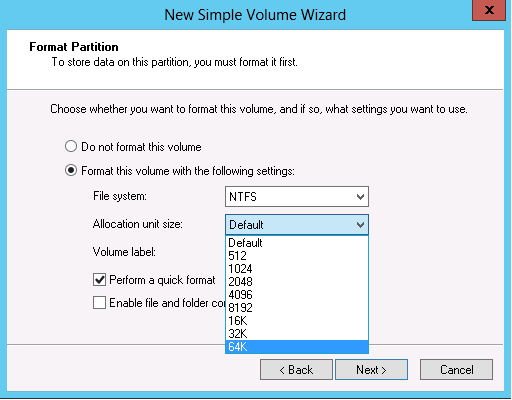
Recommendationsĭell EMC recommends an AU size of between 1 MB and 4 MB for mostly OLTP workloads, and an 8 MB or larger AU size for OLAP workloads.įor very large databases, a 16 MB or larger AU size should be considered for diskgroups where the majority of the data will be stored. Testing has shown that large data warehouses can benefit from up to 16 percent performance improvement using a larger AU size of 8 MB or 16 MB. Data is more likely to occur sequentially and seek times are significantly reduced where spinning disks are used. DistillerSR automates every stage of your systematic literature review to produce evidence-based research faster and more accurately. The 256 4 MB extents will also be stored randomly, but during any scanning of the data there will be far fewer extents of data to be randomly retrieved. The unit or focus used for assignment to comparison groups (e.g., individuals or clusters such as schools, health care teams, hospital wards, or outpatient practices). In our example above, with 1 GB of data, the 1024 1 MB extents may be stored randomly across the available disks as ASM seeks to balance the capacity of each disk. The standard also states, 'As a special case, an unnamed bit-field with a width of zero specifies alignment of the next bit-field at an allocation. Is there a specific OS NTFS allocation unit size Nutanix recommends when staging a. Definition of 'allocation unit' in C++ The C++17 standard uses the term 'allocation unit' several times in section 12.2.4 when discussing bit-fields but doesnt seem to define what the term means. Setting the AU to 4 MB would reduce the extent count to 256.įurthermore, due to ASM managing data in ASM extents which are derived from the allocation unit, a larger AU size increases the likelihood that data will be stored sequentially on spinning disk. Obviously this has a lot to do with vendor based storage and overall design. However, allocation unit size does control the size of the metadata held in ASM, and for larger databases there is a performance advantage of using a larger AU size.Ī 1 GB data file using the default Allocation Unit would require 1024 1 MB extents. The Multi-unit Assignment Problem: Theory and Evidence from Course Allocation at Harvard by Eric Budish and Estelle Cantillon. The allocation unit does not directly govern the size of I/O to the storage subsystem that is controlled by the extent size or the maximum ASM I/O size parameter which will be covered later.

SQL> create diskgroup BIG_DATA external redundancy disk '/dev/oracleasm/bigdata01'

The following example shows a new diskgroup called BIG_DATA being created on a Linux system with ASMLib with a 16 MB allocation unit:


 0 kommentar(er)
0 kommentar(er)
